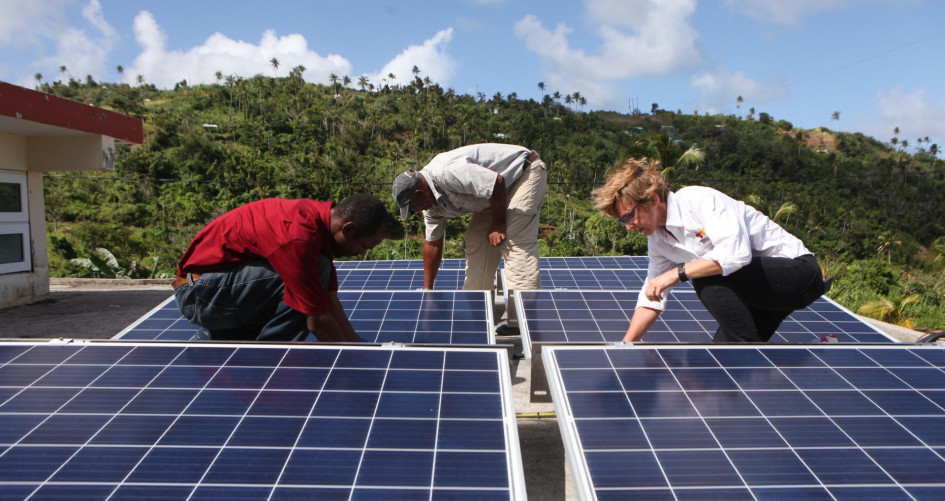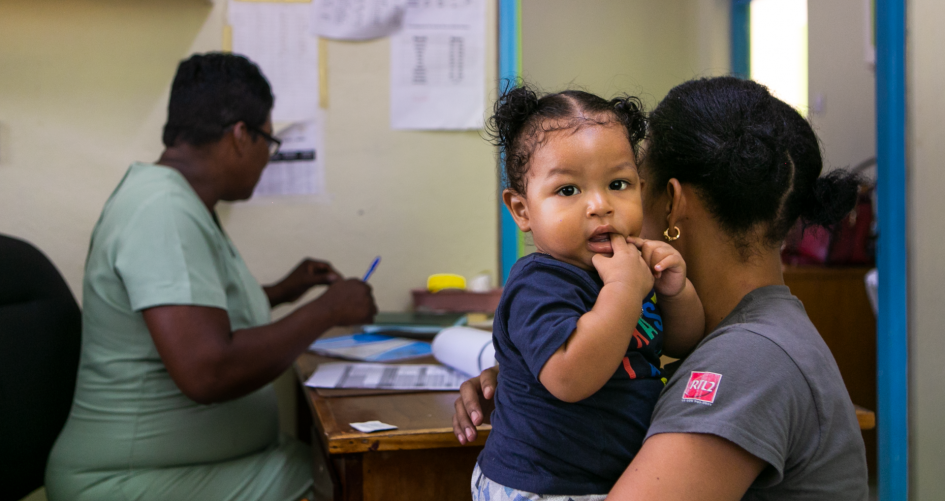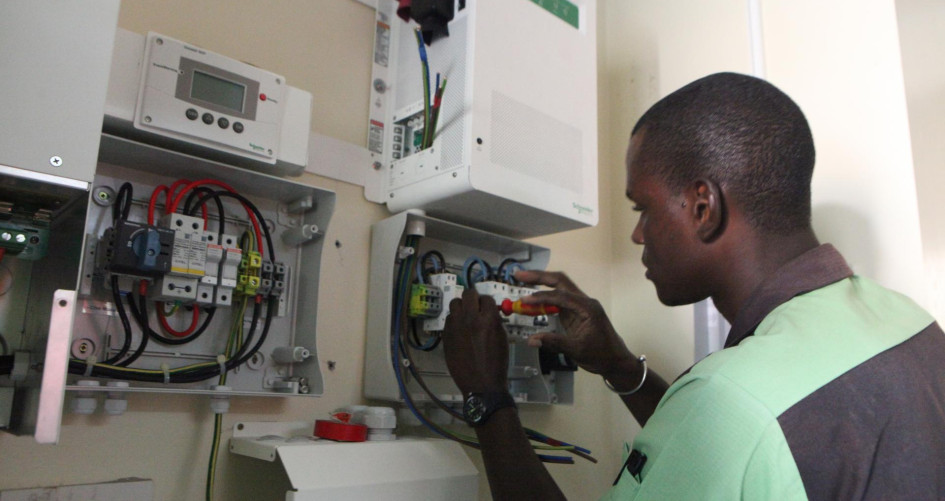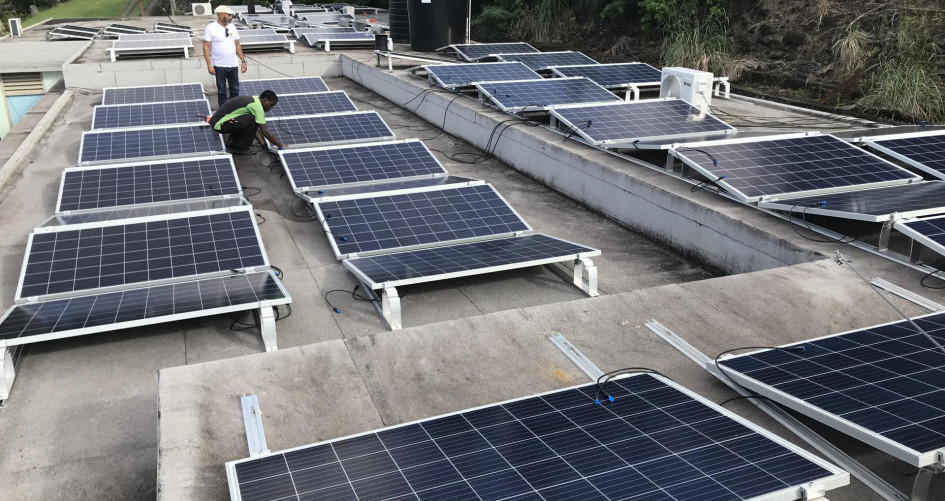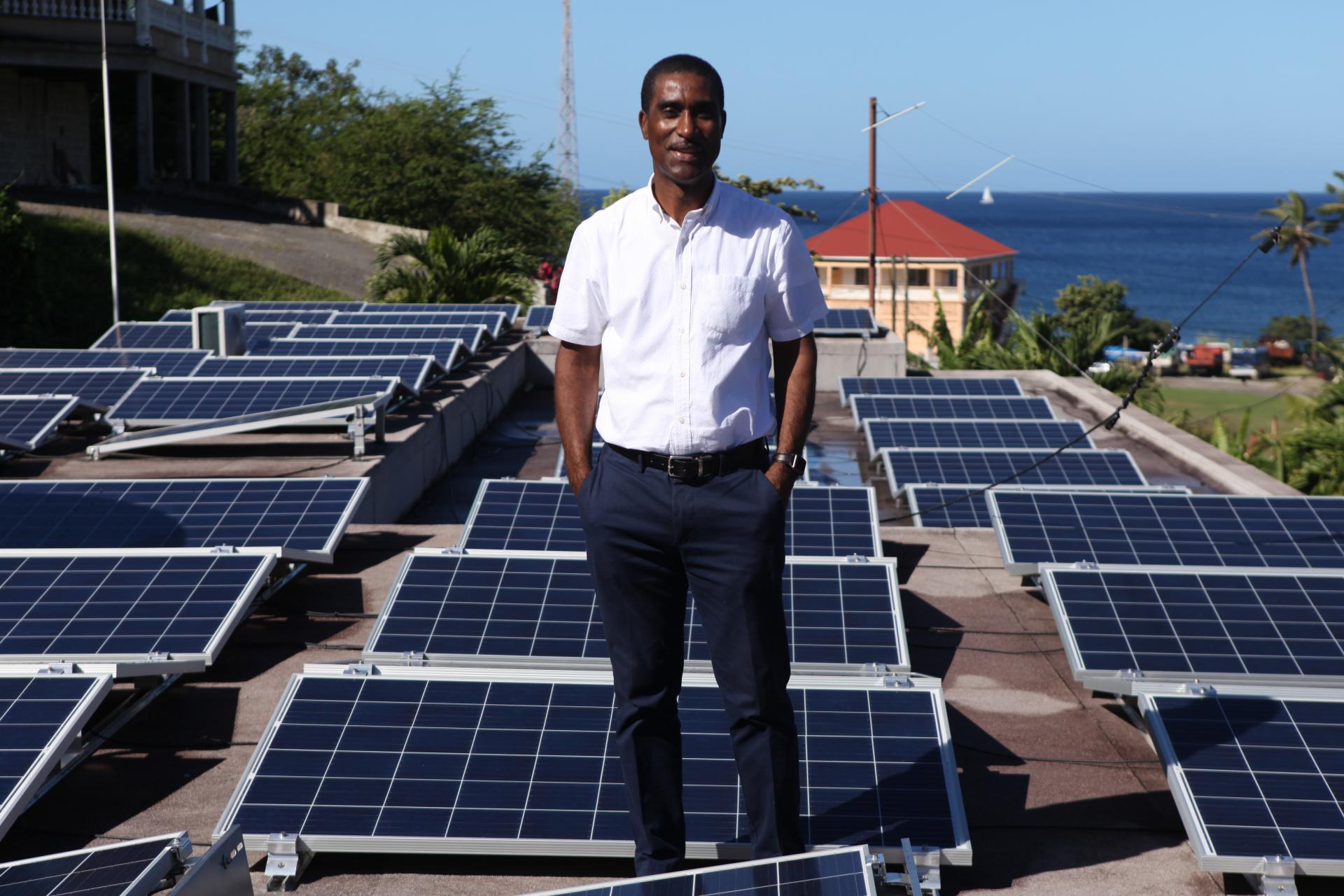This project was supported by Fondation de France, EDF Group, Schneider Electric and Capenergie.
Summary
In Dominica, the increasing frequency and ferocity of hurricanes has had a devastating impact on the island’s vital infrastructure. Following Hurricane Maria in 2017, the Prime Minister of Dominica announced his plan to transform the nation into the first “climate resilient” Small Island Developing State. Electriciens sans frontières (Electricians Without Borders France) was one of the first NGOs to answer the country’s call for assistance, with an ambitious plan to help restore electricity to health centres following worsening natural disasters.
Following the emergency, Electriciens sans frontières put forward a solution designed to assess and retrofit vital public health infrastructure with stand alone photovoltaic kits.These kits use renewable energy to secure an “emergency pocket” of power needs for six health centers on the island.
At the same time, the project also contributes to reducing electricity costs through the development of a pilot model on the largest installation to inject any surplus solar energy into the national grid. This pilot solution was deployed to meet the requirements of public health infrastructure during natural disasters, while also tackling climate change through adaptation and mitigation measures. With additional financing, these “emergency pockets” have the potential to be expanded to at least another six health centers on the island, and the solution can be easily replicated in other similar settings in the world.
Key Facts
- To date, six of Dominica’s Health Centers have been retrofitted with solar panels and electrical equipment to provide an "emergency pocket" of power following natural disasters.
- These stand alone kits are not reliant on the power grid, which allow the health centers to function autonomously. These kits are accompanied with battery capacity that ensure three days of power even without sun.
- St Joseph's Health Center, the largest center of the island, has been equipped with a 40 kW solar field. This pilot installation, a first for the island, is plugged into the national power grid.
- These renewable energy installations play a key role in contributing to the decarbonization of Dominica’s energy mix.
The Problem
As with most Small Island Developing States, Dominica has made a very small contribution to the overall global emissions that cause climate change, and yet it is amongst the most affected countries. The small island state faces a range of acute and long-term risks, including worsening extreme floods and storms.
In September 2017, the category-5 storm Hurricane Maria made landfall on the small island of Dominica, thrashing the country with extreme winds and rain. The storm left its entire population, 72,000 people – 90% of whom live in coastal villages – without electricity and water and up to 20,000 buildings. Health clinics and schools were either damaged or completely destroyed.
The Solution
Electriciens sans frontières designed a pilot solution to assess and retrofit Dominica's vital health infrastructure to become more resilient in the aftermath of worsening natural disasters. To do this, they installed “stand alone” photovoltaic kits, using renewable energy to secure an “emergency pocket” of power needs for six health centers on the island.
To plan for the future, the project also aims to reduce electricity costs, by creating a pilot model that injects surplus energy into Dominica's national grid. The pilot solution was deployed by December 2018, and helps address emergency health needs during disasters, while also tackling climate change – that is, adaptation to its effects (emergency power to health centres during worsening natural disasters) and mitigation (helping decrease the carbon footprint of healthcare and improve the island’s energy mix).
Helping the Planet
The project focuses on implementing pilot mitigation measures to address climate change and reduce the sources of greenhouse gas emissions on the island. To date, the total installed power capacity on the island is 25 MW with about 6.5 MW from small hydro electrical installations, while the rest is dependent on diesel installations and imports.
By harnessing solar energy to decarbonize the island’s energy mix and reduce its environmental footprint, it is estimated that the six "stand alone" 2-4 kWp solar kits represent a CO2 emission reduction of around 300 tonnes, while the 44 kWp solar field reduces CO2 emissions by about 700 tonnes (across an average lifespan of 15 years).
Moreover, the injection of surplus solar energy produced by the solar panel at St Joseph’s Health Center into the national grid, a first for Dominica, will contribute directly to the reduction of carbon-based energy sources in the country’s energy mix.
Helping People
Each of the affected health centres serves a population of around 2,500 people and these communities are the main beneficiaries of this project. Electriciens sans frontières selected health centres in areas with a high poverty rate to ensure they were serving the populations who were most vulnerable.
During natural disasters, such as Hurricane Maria in 2017, these impacted communities face a higher mortality risk due to their geographical isolation and difficulties to reach the island's capital. Dominica’s Indigenous population were taken into account in the design of this pilot program – the project targeted the health center located in the Kalinago territory, where the Carib minority lives.
Equipping these six health centers with an independent energy source allows these populations to be adequately treated during natural disasters and in the weeks following the disruption, improving their chances of surviving the event. This especially impacts people that rely on permanent medical assistance, often the elderly and the sick. For example, those who depend on breathing equipment risk death in the case of a prolonged power outage.
By upgrading to solar energy, the functioning costs of the health centres have decreased. Instead of spending large amounts of public funds on oil and imported energy, these resources can be reallocated to other social policies and improving the island’s socio-economic development
Spillover Effect
The project’s approach – that is, installing stand alone solar kits with easily removable panels for disaster-prone areas – can be easily replicated on other health centres subject to similar conditions. With adequate funding, this solution has the potential to be extended to a number of public buildings in Dominica, while it also provides a highly replicable model for other Small Island Developing States.




Images owned by the activity partners, all rights reserved.
